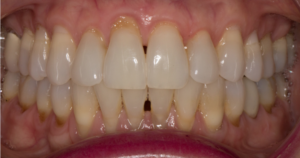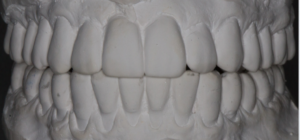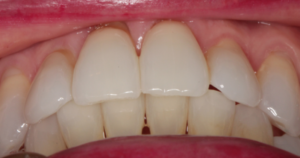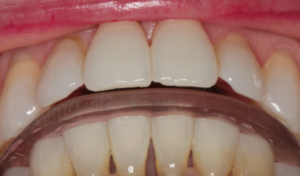Patients managing an airway problem with night-time use of a mandibular advancement device may develop a posterior open bite. Attempting to reapproximate the posterior teeth in this occlusal distortion involves mandible retrusion and OA flexion, thus reversing the natural lordosis of the neck. Accurately mounted study models taken after the cervical curvature has been supported can reveal that discrepancy.


Identical principles of splint design are employed as in other cases:
Solid posterior stops
Light anterior occlusion
Shallow anterior guidance
Smooth crossover


Patients with posterior open bites experience repetitive occlusal trauma to the anterior teeth. Designing the splint to provide a little clearance to these teeth on full closure will allow the PDL to recover from the trauma. As the PDL of the front teeth tightens, the upper incisors will yet again make an impact against the leading edge of the splint. Several appointments may be necessary to relieve the anterior tooth contact pressure over and over. As the lower jaw has more freedom to come forward, the cranium has the freedom to rotate posteriorly on the Atlas.
